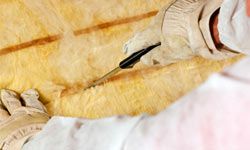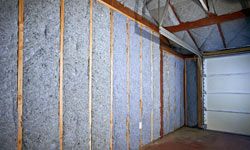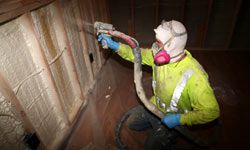Key Takeaways
- Green insulation options include materials like sheep's wool, cotton (recycled denim), aerogel, rigid polystyrene and Icynene (spray-on foam insulation made from castor oil).
- These eco-friendly insulation choices are not only made from renewable resources or recycled materials but also aim to reduce energy costs significantly by improving home insulation.
- While some options like aerogel and Icynene offer superior insulation qualities, others like sheep's wool and cotton provide natural and less toxic alternatives to traditional insulation materials.
Is there anything soybeans can't do? You can find them in milk, candy, disinfectants, insecticides, cooking oils, margarine and now, home insulation. Chicago homeowners Jason and Jennifer LaFleur learned all about insulation when they began renovating their kitchen. They found that they didn't need to buy conventional fiberglass insulation. Instead, they sprayed soybean foam insulation into their walls [source: Pandolfi].
The LaFleurs discovered what other homeowners are now learning -- that the color of home insulation isn't just pink. It's also green -- as in eco-friendly. Whether the insulation is made from shredded denim, hemp or sheep's wool, alternative insulation can not only save homeowners money, but also help the environment.
Advertisement
Reducing energy costs is one of the most important factors in selecting insulation. In cold weather, insulation is used to keep the warm air in. In warm weather, it keeps the hot air out. And that's important because HVAC systems are responsible for roughly 44 percent of all the energy used in a home [source: Pennock]. But the right insulation can reduce an energy bill by 10 to 30 percent [source: Pennock].
Technically speaking, home insulation is green by its very nature because it saves energy. Then why is "green" insulation greener? For some people, it's green when it contains a high percentage of recycled materials; for others, it's when it doesn't contain harmful substances that can cause health problems. Still, others consider insulation green when it's made of natural materials [source: Carter].
Whatever your definition of green, the best way to quantify how well insulation works is by its R-value, which measures its resistance to heat flow and ranges between less than R-1 and R-60. The more the material restricts the flow of heat, the higher its R-value [source: U.S. Department of Energy]. Generally, the higher the R-value, though, the more it costs [source: Carter]. Homes should be insulated with enough material to achieve an R-value between R-30 and R-60 [source: U.S. Department of Energy]. That means if the type of insulation you choose has an R-value between R-3 and R-4 per inch, you'd need to have at least 10 inches of the material to achieve an R-value of R-30.
Interested in greening your insulation? Read on to see our top five picks for eco-friendly insulation. They're renewable, made from recycled materials and will save you money on energy costs.


